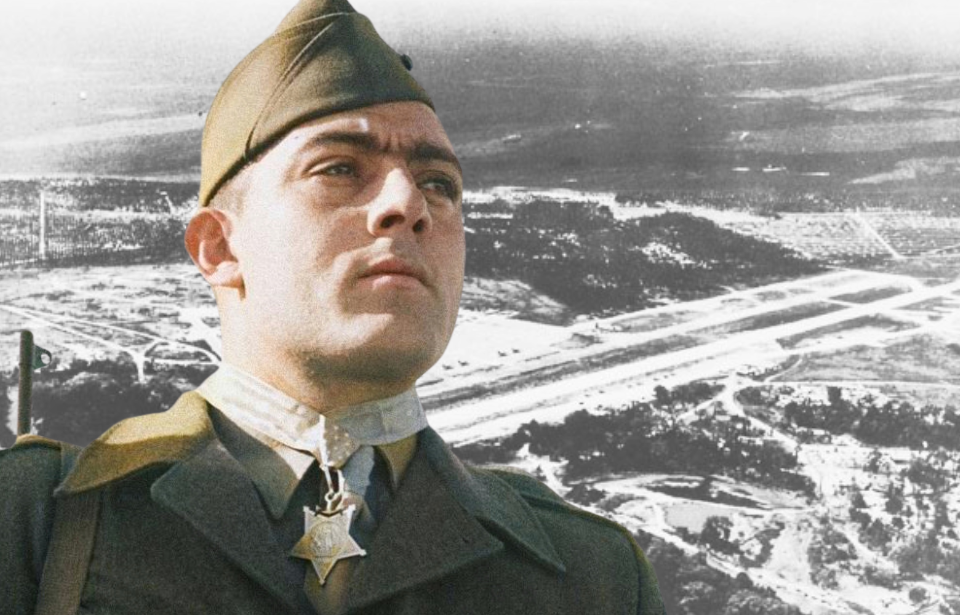There are few people in American history who are held in such high esteem as US Marine Corps Gunnery Sgt. John Basilone. A Medal of Honor recipient who distinguished himself in the Pacific Theater during the Second World War, he frequently put the wellbeing of his comrades ahead of his own, with his gallantry in battle later depicted in the 2010 HBO miniseries, The Pacific.
John Basilone initially served in the US Army
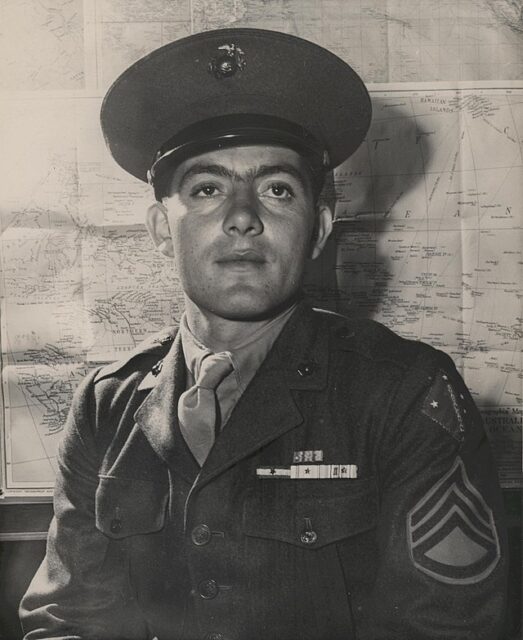
John Basilone was born on November 4, 1916, in Buffalo, New York, as the sixth of 10 children. Growing up in Raritan Town, he attended school up to the age of 15, dropping out before beginning high school. He went on to work as a caddy at a local country club, before enlisting in the US Army.
Basilone was initially assigned to the 16th Infantry Regiment at Fort Jay, New York. After serving out his time, he was discharged, but lasted only one day as a civilian before re-enlisting. Assigned to the 31st Infantry Regiment, he and his comrades were sent to the Philippines, where he became known for his boxing abilities.
After three years in the Army, Basilone found work as a truck driver in Reisterstown, Maryland, all the while thinking about his time in the military. He only survived for a few years before the urge to return to the Philippines grew too strong to ignore. This ultimately led him to join the US Marine Corps, as he believed the branch would get him overseas faster than the Army.
Basilone underwent training at Marine Corps Recruit Depot, Parris Island; Marine Corps Base Quantico and Marine Barracks New River (today Marine Corps Base Camp Lejeune). Once finished with his training, he was sent to Guantánamo Bay, Cuba, followed by the Pacific Theater.
Medal of Honor-worthy actions on Guadalcanal
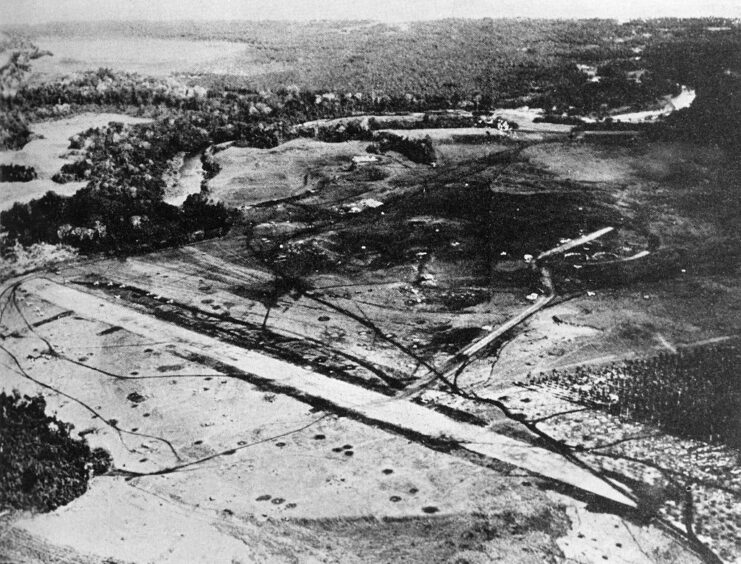
Assigned to D Company, 1st Battalion, 7th Marine Regiment, 1st Marine Division, John Basilone was among those involved in the difficult and bloody Guadalcanal Campaign. Landing on the island in September 1942, he showed his strength and determination just one month later, during the Battle for Henderson Field.
At just after 10:00 PM on October 24, 1942, the airfield was ambushed by 20,000 Japanese soldiers. Basilone, his fellow Marines and other servicemen had been tasked with guarding the area and the “Lunga” perimeter, and they knew they were in for a tough night of fighting. Basilone and his unit, in particular, were faced with 3,000 troops from the Sendai Division armed with mortars, machine guns and grenades.
Basilone was tasked with commanding two machine gun sections. Two of the guns jammed during the initial firefight, leading the Marine, at great risk to his own life, to grab a machine gun, sprint 200 yards and get to work fixing the incapacitated one. After this, he spent the night firing the weapons, one after the other, until his ammunition became dangerously low. At some point, he’d even lost his gloves, meaning he willingly exposed his hands and arms to burns from the hot metal to mow down the enemy.
With dwindling ammunition and the Japanese cutting off their supply lines, the situation looked bleak for the Marines. However, Basilone wasn’t one to give up. Fighting his way through enemy lines, he collected as much ammunition as he could, before going back to his position and manning the same machine guns. When the weapons became inoperable, Basilone took out his .45 Colt and a machete and used them to hold the enemy back until relief arrived.
The engagement lasted several days, and only Basilone and two others came out of it alive, with the former credited with 38 kills. Lt. Col. Chesty Puller, impressed with his gallantry in battle, recommended him for the Medal of Honor, the highest decoration bestowed upon servicemen by the US military. He was awarded it in 1942, but didn’t want to take all the credit, saying, “Only part of this medal belongs to me. Pieces of it belong to the boys who are still on Guadalcanal.”
John Basilone’s accomplishments were used to promote war bonds
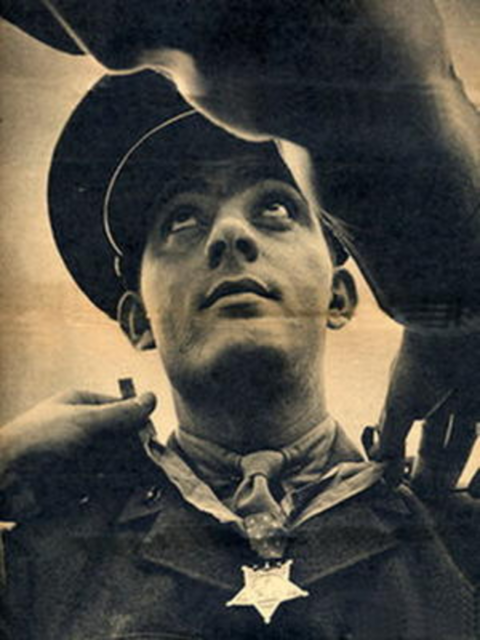
In 1943, John Basilone returned to the United States, where he was given a hero’s welcome, complete with a homecoming parade. He was then sent on a tour of the country to promote the sale of war bonds, which, while critical to the war effort, didn’t feel like the best use of his time or skills. The Marine frequently requested that he be redeployed to the Pacific, but was told he was better help on the home front, to which he responded, “I ain’t no officer and I ain’t no museum piece. I belong back with my outfit.”
Eventually, Basilone’s request was granted, with the Marine being sent to Marine Corps Base Camp Pendleton for training. It was there that he met his future wife, Sgt. Lena Mae Riggi of the Marine Corps Women’s Reserve. The pair married before he was sent back overseas.
Losing his life on Iwo Jima
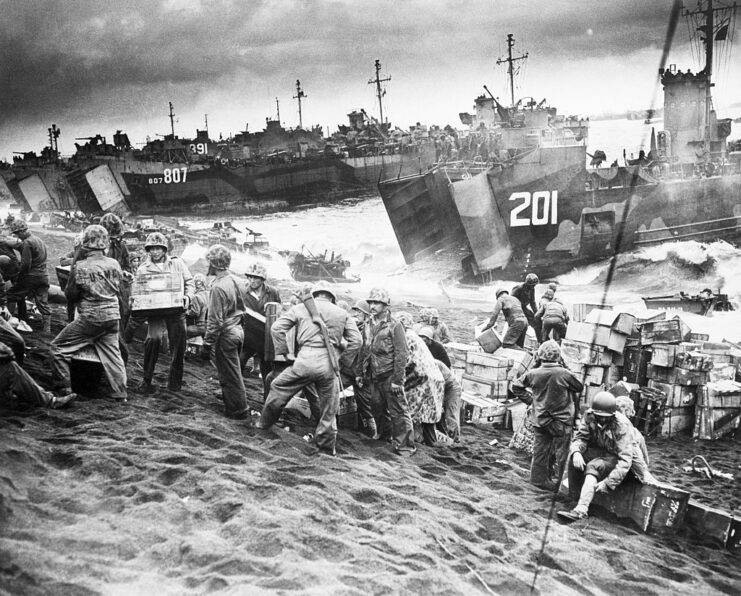
Assigned to C Company, 1st Battalion, 27th Marine Regiment, 5th Marine Division, John Basilone was deployed to Iwo Jima, where he ultimately lost his life on the first day of American action on the island.
Serving as a machine gun section leader on Red Beach II, on the southern tip of Iwo Jima, he and his comrades faced heavy fire from enemy troops stationed in blockhouses. Aware they wouldn’t make any headway if the situation wasn’t resolved, Basilone crept to one of the blockhouses, climbed atop it and attacked those inside with grenades and other explosives.
Following this, the Marine made his way to Airfield Number 1, where he aided a tank crew who’d became trapped in a Japanese minefield. Despite the position being under intense artillery and mortar fire, Basilone led the armored vehicle through the tough terrain, successfully getting it to safety.
Sadly, it was here that Basilone perished. Accounts differ as to how his death occurred, with some sources saying he was struck by shrapnel from a Japanese mortar and others alleging he’d been hit in the groin, left arm and neck by small arms fire. Regardless of how he died, the gunnery sergeant’s actions allowed his fellow Marines to move inland in the early stages of the Allied invasion. For this, he was posthumously awarded the Navy Cross.
Upon his body being returned to the United States, Basilone was interred at Arlington National Cemetery.
John Basilone left behind an enduring legacy
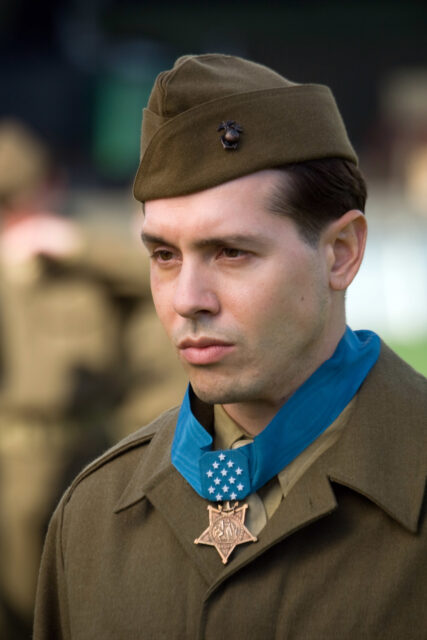
John Basilone was the recipient of several distinctions outside of the Medal of Honor and Navy Cross for his military service, including the American Campaign Medal, the Purple Heart, the Marine Corps Good Conduct Medal, the US Marine Corps Rifle Sharpshooter Badge, the Navy Presidential Unit Citation with one star, the World War II Victory Medal, the American Defense Service Medal with one star and the Asiatic-Pacific Campaign Medal with two stars.
In recognition of his bravery and self-sacrifice, the Marine has been honored in several ways. Along with having two US Navy vessels named for him – the Gearing-class destroyer USS Basilone (DD-824) and the upcoming Arleigh Burke-class guided-missile destroyer USS Basilone (DDG-122) – a parachute landing zone at Camp Pendleton is named after him, as is one of the camp’s entry points.
More from us: The Tragic Last Stand of the HMS Hood Against Germany’s Prized Battleship Bismarck
The majority of military history fans will also remember Jon Seda’s portrayal of Basilone in The Pacific, the 10-episode miniseries about his service and that of Pfc. Robert Leckie and Cpl. Eugene Sledge.
